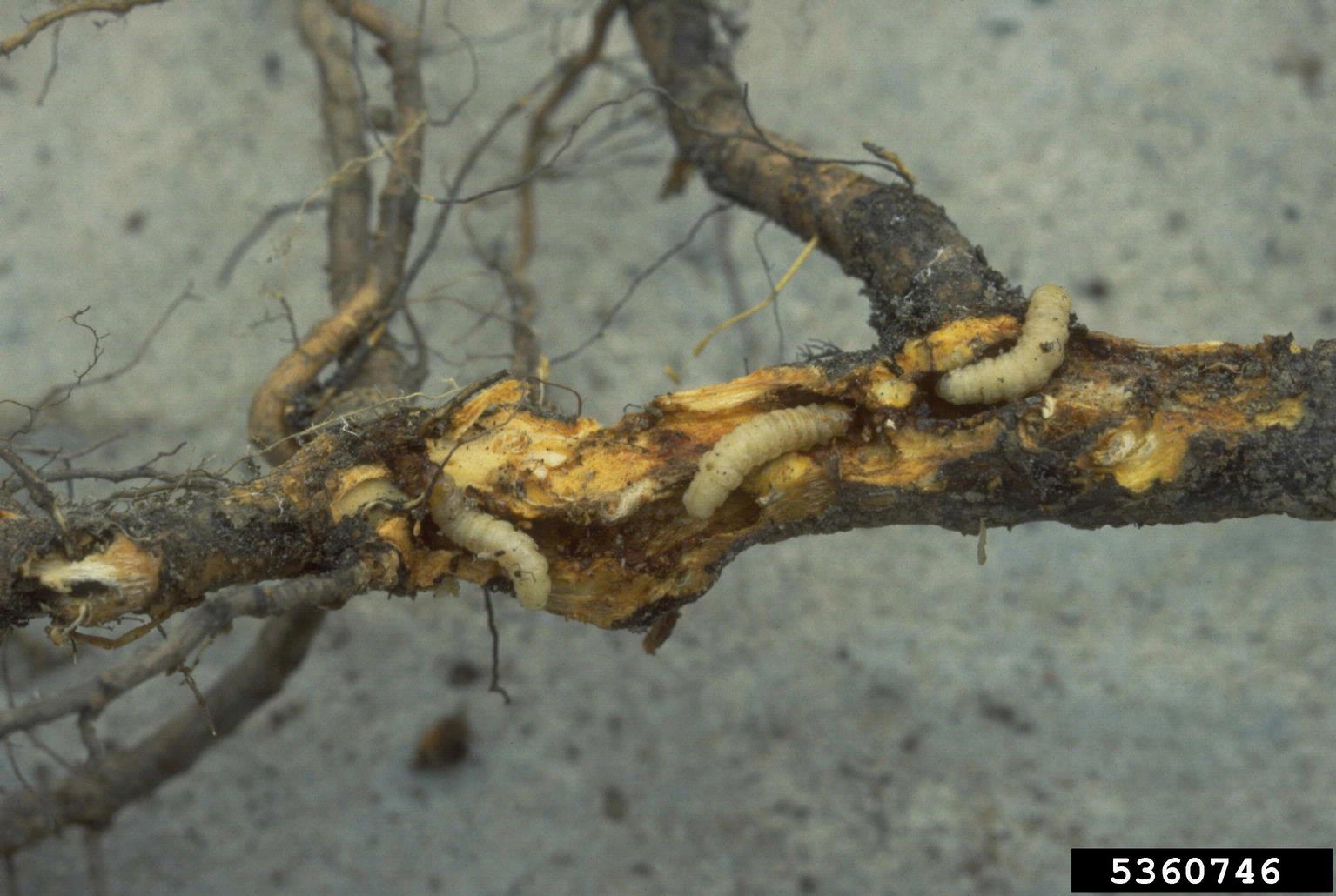Tips For Peach Tree Borer Control


One of the most destructive pests to peach trees is the peach borer. Peach tree borers can also attack other pitted fruit-bearing trees such as plum, cherry, nectarine, and apricot. These pests feed under the bark of trees, weakening them and leading to death. Keep reading to learn more about how to control peach tree borers.
How Peach Tree Borers Damage Trees
Peach borer larvae tunnel through cracks and wounds within bark, feeding on the sapwood. Peach tree borers attack near the soil line, with most activity occurring a few inches (8 cm.) below the ground. Eventually, the bark begins to peel off damaged areas, making the tree susceptible to other pests and disease. Adults, which resemble wasps, are most prevalent from mid-May to early October. During this time, eggs are laid on the trunks of trees, hatching within a week to ten days. Evidence of peach borer damage can usually be seen in spring and summer, with affected trees quickly declining in health. Generally, when these pests are present, trees will exhibit an oozing, clear gum-like sap (not to be confused with the amber-colored sap attributed to canker) mixed with sawdust. The whitish larvae may also be seen.
How to Control Peach Tree Borers
Peach tree borer control can be difficult, as the larvae are not easily accessible beneath the tree bark. Most effective control methods consist of preventive insecticides targeted at the egg or early larval stage. These usually contain permethrin or esfenvalerate. Borers may also be controlled by applying paradichlorobenzene (PDB) crystals around the base of trees in fall, taking care not to come in contact with the tree itself. Amounts used will vary, depending on the tree's age and size, so read and follow instructions carefully. In addition, proper care and overall maintenance of trees are important preventive measures.
What and When to Spray for Peach Tree Borers
When spraying trees to control peach borer pests, choose those with lindane endosufan or chlorpyrifos. Sprays should be mixed according to label instructions. They should also be applied so that it runs down the trunk and soaks into the ground around the base. Try not to spray on foliage or any fruit that may still be on the tree. The best time to spray trees is within the first or second week of July and again in late August or September.
Gardening tips, videos, info and more delivered right to your inbox!
Sign up for the Gardening Know How newsletter today and receive a free copy of our e-book "How to Grow Delicious Tomatoes".

Nikki Tilley has been gardening for nearly three decades. The former Senior Editor and Archivist of Gardening Know How, Nikki has also authored six gardening books.
-
 Try The Trend – Turn Any Bed Into A Keyhole Garden With This Clever In-Ground Composter
Try The Trend – Turn Any Bed Into A Keyhole Garden With This Clever In-Ground ComposterKeyhole gardening is an efficient and sustainable practice that saves space. Get started on this DIY project quickly and easily with an in-ground composter.
By Bonnie L. Grant
-
 4 Superfast Composting Methods: Turn Waste Into Garden Gold In 30 Days Or Less
4 Superfast Composting Methods: Turn Waste Into Garden Gold In 30 Days Or LessTry the fastest composting methods to turbocharge your pile and transform kitchen scraps and garden waste into finished compost in just a few weeks.
By Mary Ellen Ellis